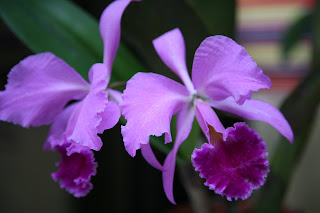


 2. The Guanacaste Tree
2. The Guanacaste TreeNational Tree of Costa Rica
1. Catholic Church Nicoya-Costa Rica
Built by Spainards in early 1600's
3. School children Nicoya Costa Rica
4. Beach Guanacaste Costa Rica
Let's travel Costa Rica to the province of Guanacaste. (Northern part of the country). Known as Cowboy Country and also famous for its sandy white beaches on it's northwest Pacific coastlines. Nowhere else in Costa Rica will one see so much color; music of the marimba, the national costumes worn on the major holiday festivals, cowboys and cattle drives, rodeos and , bullfights. Tourism has blossomed here because the second international airport opened here near the town of Liberia. Guanacaste was originally a part of Nicarauga, it's northern neighbor. Evidence is in the broad-bronze skinned faces of the Guanacastecans, whose ancesters were the Chorotegas, the indigenous people occupying this region when the Spaniards came to Costa Rica and colonized (in the 1500's) Christopher Columbus landed on the Carribean coast of C Rica on his 3rd voyage to the new world, opening the door for his fellow countrymen to follow.
Here in Guanacaste the land was cleared of it's dry forest during the Spanish colonial era and developed into large cattle ranches . The Spaniards used the Chorotega to work the land and herd the cattle. Now, very few of the Chorotegas remain, living in a small villages named Guaitil. They sell their pottery which is mostly museum reproductions. And they are very good at it. Tourist flock to see the pottery making process and take home some of Gunacaste's local flavor.
How to get to Guaitil: go to Santa Cruz ..easily seen on a Costa Rican map. If you are renting a car the roads are good. Then follow the map to Guaitil (approx 7-8 miles) It's a nice day trip if you are staying at one of the northwest beach hotels or resorts.
Where the major tourist attractions in Guanacaste are located is flat, so you are not driving up-down and around mountains all day. The tourism attractions are concentrated along the beautiful beaches and one can find accomodations for every budget. Cars can be rented at the Liberia Internationl airport.
Interesting nature preserves are located in Guanacasate as well as Two National Parks. You can purchase day trips to these sights right from your hotel front desk.
I have visited the following and highly recommend them: Palso Verde National Park..a sanctuary for migratory birds..best time to visit is around 1st December thru February. Less birds migrate thru here the rest of the year.
Also Rincon de la Viejo National Park (in northern region) is unique for its small gurgling hot pools all around base of volcano. Nice to spend one night there. You can drove your rental car or purchase a tour from your hotel. Several small hotels are in and around the park...Check out your favorite guide books for references on hotels.
One could spend a couple of weeks or longer in this regions and still not be able to visit all the interesting places.
Climate: Warm between 80-90 degrees F. Most hotels have air conditioning.. take clothing that is casual and cool..cottons are best.
Activities: Great surfing along most of the beaches, deep sea fishing for sail fish and tuna, hikings, horseback riding, photography, birdwatching, experience a volcano, watch a bullfight and an old fashion rodeo. Listen to the music of the marimba, Breathe fresh air and just let the green of nature soak in!
Best time to visit: doesn't rain as much here as in the other parts of Costa Rica, so any month of the year is good. However, mid December thru end of April (the drier season) you will see the beautiful flowering trees in full bloom in shades of yellow and pink. Beach lovers like these months because there is more sunshine.
How to get there: 1. Liberia international airport located in the heart of the province- or 2. drive from the central valley - San Jose area in a few hours..(roads are good) 3. local buses are reliable and inexpensive. 4. Greyline (private bus line) and Interbus ...check their schedules and fares on the internet.
Hotels: Many different hotels along the beaches for all budgets and tastes. Some are all inclusive-( the best all around deals) Check your favorite guide book for listings. Plus there are many small towns along the way with reasonably priced-tico restaurants.
In summary: Have a wonderful vacation in Guanacaste. Experience the Pacific beaches, visit a working cattle ranch, visit the two national parks of Rincon de la Vieja and Palo Verde. And leave with the feeling that Costa Rica is preserving nature for us and for our children.
Remember to take with you: camera with your battery charger, mosquito repellent, sunscreen and sunhat, small backpack to carry bottled water and other small things.
So travel Costa Rica and have fun! And as they say "Pura Vida"



